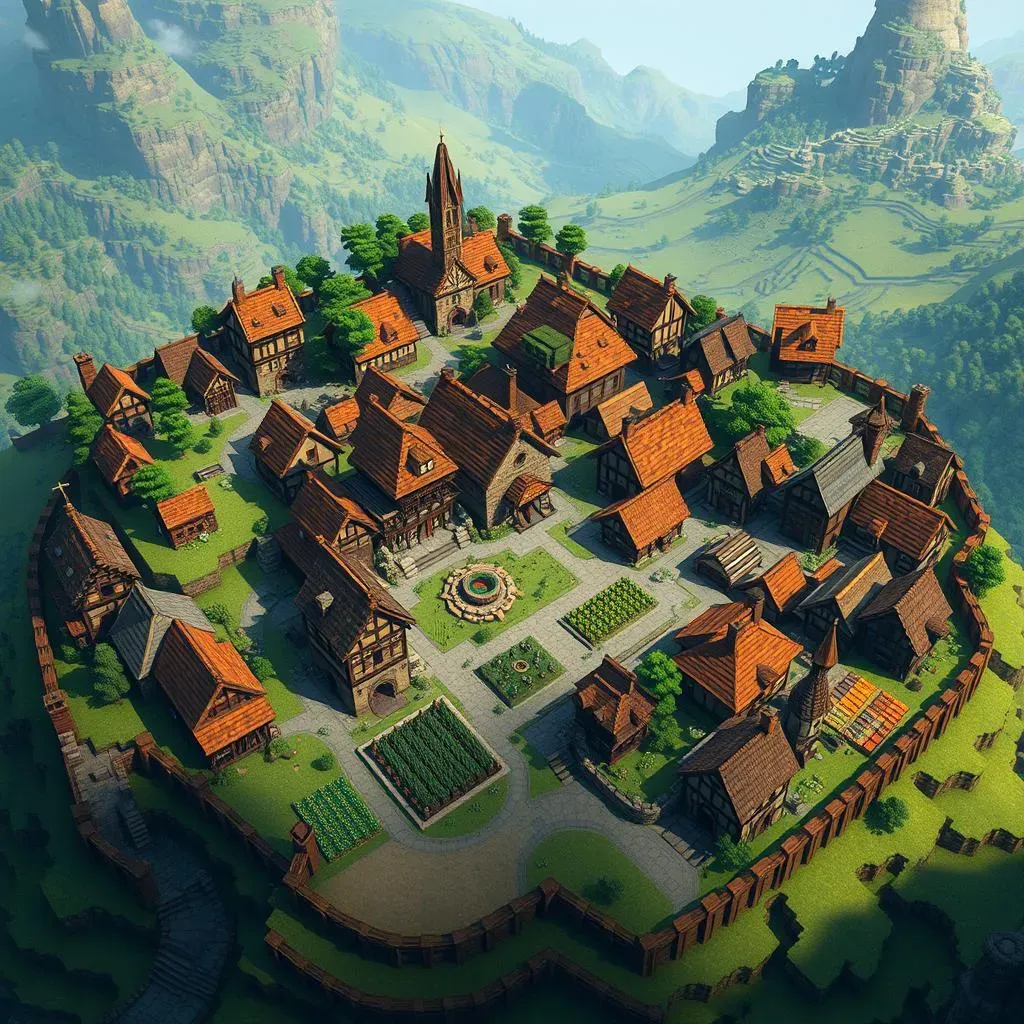Table of Contents
Ever dreamt of building a sprawling medieval village in Minecraft? You're not alone! Crafting the perfect **medieval Minecraft house village layout** can feel like a daunting task, but it's incredibly rewarding. Where do you even start? What buildings are essential? How do you make it look authentic and not just a random jumble of blocks? This guide is your blueprint to pixelated feudalism. We'll walk you through everything from choosing the ideal location and architectural style to designing individual medieval Minecraft houses and planning the essential buildings that will bring your village to life. Get ready to trade your cobblestone box for a thriving medieval settlement!
Planning Your Perfect Medieval Minecraft Village Layout: Location & Style
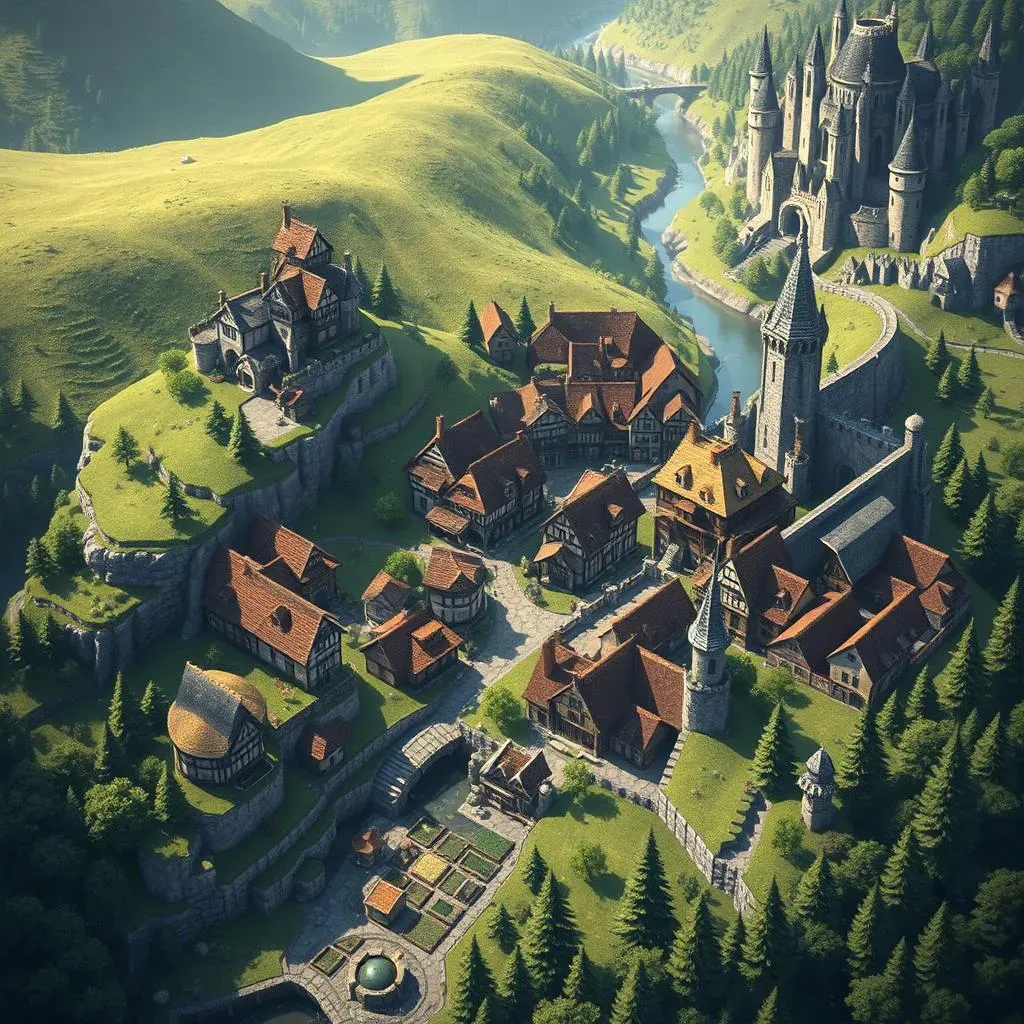
Planning Your Perfect Medieval Minecraft Village Layout: Location & Style
Alright, so you're diving into building a medieval Minecraft village layout? Awesome! First things first, location, location, location! Think about where a real medieval village would thrive. Are we talking rolling hills with a river snaking through? Maybe nestled in a forest clearing? Or perhaps dramatically perched on a cliff overlooking the sea? The terrain is your canvas. Don't just plop it down anywhere. Consider natural defenses like mountains or water, and resources like forests for wood and plains for farming. Also, think about the overall vibe you're going for. Is it a humble, rustic village? Or a grand, imposing settlement? This will heavily influence your building style and the materials you choose. Are we talking cozy thatched roofs and half-timbered walls, or imposing stone structures with slate roofs? Decide on your architectural style early on – Nordic, Germanic, English Tudor – and stick with it to maintain a cohesive look throughout your medieval Minecraft house village layout.
Designing Stunning Medieval Minecraft Houses for Your Village
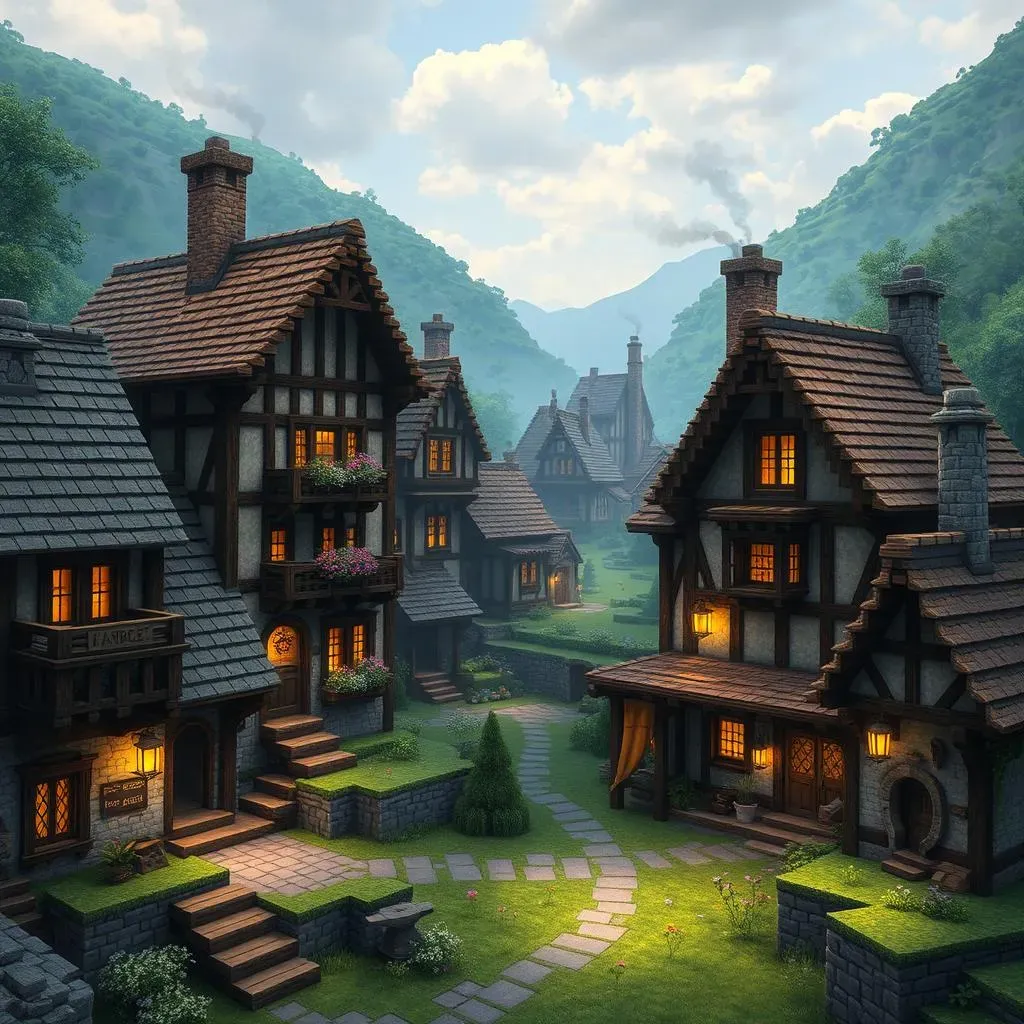
Designing Stunning Medieval Minecraft Houses for Your Village
Choosing Materials and Shapes for Medieval Minecraft Houses
let's get into the fun part: actually designing your medieval Minecraft houses! First off, materials are key. Think about what was available in medieval times – wood, stone, maybe some brick if you're feeling fancy. Cobblestone and wood logs are your best friends for walls. Spruce and dark oak wood give that classic medieval vibe. For roofs, consider using stairs and slabs of cobblestone, stone brick, or even dark oak wood for steeper pitches. Shape-wise, keep it relatively simple. Medieval houses weren't sprawling mansions. Think rectangular or square footprints. Start with a basic box and then add character with roof shapes and extensions. Gabled roofs (the pointy ones) are iconic, but don't be afraid to mix in hip roofs (sloped on all sides) for variety. And remember, not every house needs to be a mansion; vary the sizes to make it feel more realistic. Think cottages, workshops, and maybe a few larger homes for wealthier villagers.
Adding Details and Avoiding Cookie-Cutter Homes
To really make your medieval Minecraft house village layout pop, ditch the cookie-cutter approach! No one wants a village full of identical houses. Spice things up with details! Overhangs are your secret weapon. Extend the second floor out by a block or two using fences or trapdoors for support – it instantly adds depth. Window boxes with flowers, little balconies, and chimneys are all great additions. Vary the window styles too. Arched windows, small square windows, maybe even some stained glass for richer homes or a church later on. And don't forget about texturing! Mix different blocks within the same color palette. For example, use both cobblestone and stone bricks in your walls, or throw in some andesite for a slightly different shade. Little details like barrels, crates, and lanterns around the entrances also make a huge difference. Imagine each house telling a little story, reflecting the personality or profession of its inhabitant. A blacksmith's house might have an anvil outside, while a baker's house could have a chimney puffing smoke.
Material | Minecraft Block | Medieval Vibe |
|---|---|---|
Walls | Cobblestone, Wood Logs, Stone Bricks, Planks | Rustic, Strong, Classic |
Roofs | Cobblestone Stairs/Slabs, Stone Brick Stairs/Slabs, Dark Oak Stairs/Slabs | Durable, Varied, Elegant |
Details | Fences, Trapdoors, Flower Pots, Lanterns, Barrels, Crates | Character, Life, Storytelling |
Key Buildings for an Authentic Medieval Minecraft Village Layout
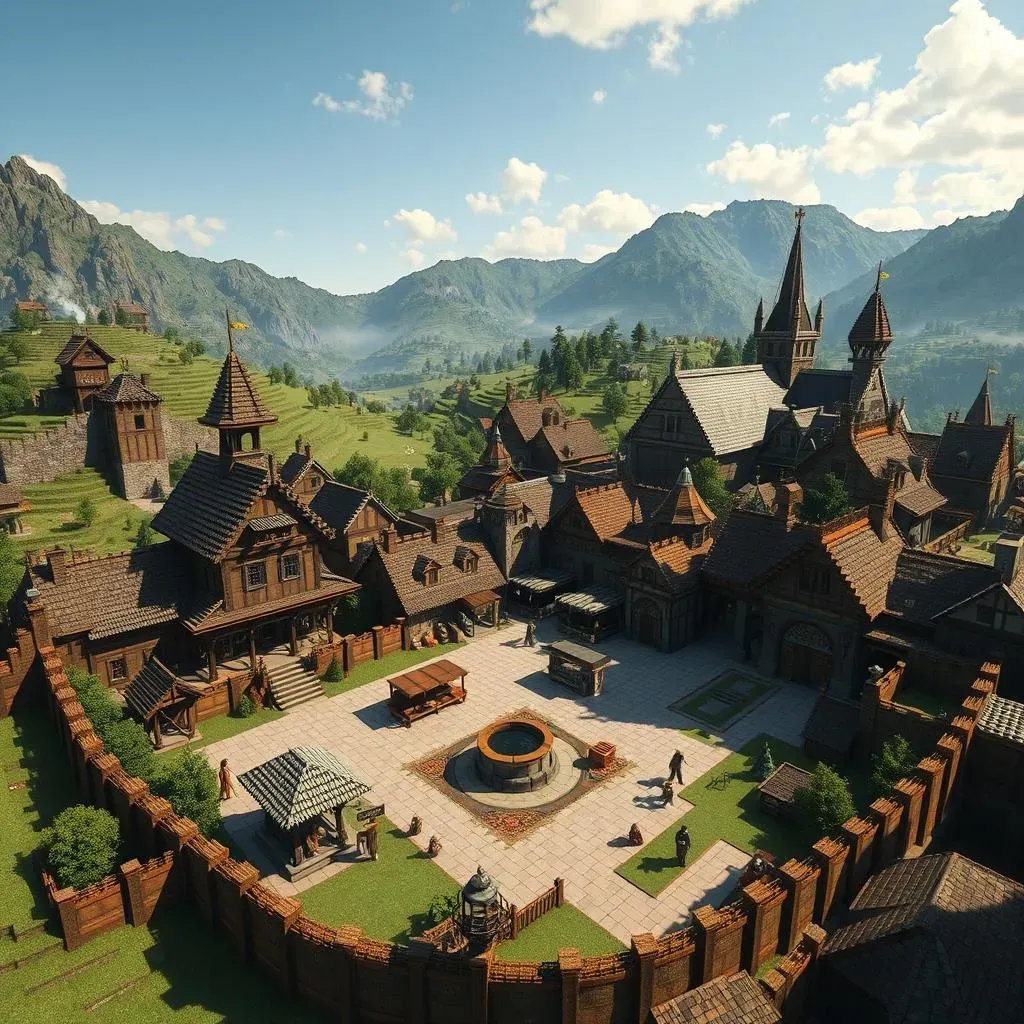
Key Buildings for an Authentic Medieval Minecraft Village Layout
The Heart of the Village: Town Center Essentials
Alright, a medieval Minecraft house village layout isn't just houses, right? You need some key buildings to make it feel like a real place. Think about the center of your village. Every good village needs a heart, a focal point. This could be a town square, a village green, or even just a slightly wider street. Around this central area, you'll want to place your most important buildings. A town hall or meeting hall is a great start – somewhere for villagers to, you know, villager stuff. A well is essential too! Functionally, it's a water source, but visually, it's a classic village centerpiece. Plus, it just looks right. Maybe even a small market stall or two to hint at trade and commerce.
Keeping Villagers Happy: Essential Services and Commerce
To keep your villagers happy (even if they are just pixelated ones!), you need essential services and places for commerce. A blacksmith is a must-have – gotta keep those tools and armor in shape! A church or chapel adds a touch of medieval life and gives a nice visual landmark. Think about other trades too. A butcher, a baker, maybe a fletcher if you're feeling fancy and want to arm your villagers. A general store or market area is perfect for showcasing these trades. You can use different building styles to reflect their purpose. The blacksmith might be a bit more rugged and smoky-looking, while the church could be taller and more ornate. Scattering these buildings around your medieval Minecraft house village layout makes it feel alive and functional.
Building Type | Purpose | Medieval Vibe |
|---|---|---|
Town Hall | Village meetings, governance | Center of authority |
Well | Water source, central point | Essential and practical |
Blacksmith | Tools, weapons, armor | Industry and craft |
Church/Chapel | Religious life, landmark | Community and faith |
Market Stalls | Trade and commerce | Economic activity |
Defense and Security: Protecting Your Medieval Minecraft Village
Now, let's not forget about defense! Medieval times weren't exactly peaceful, were they? Depending on how hardcore you want to go, consider adding some defensive structures to your medieval Minecraft house village layout. Walls are the classic choice. Even a simple wooden palisade or a low stone wall can make a big difference visually and, you know, keep out those pesky creepers. Guard towers are awesome for adding height and vantage points. Place them at strategic corners or overlooking entrances. A gatehouse is essential for controlling access to your village. Make it imposing! Drawbridges, portcullises – go wild! Even if you're not actually worried about sieges in Minecraft, these defensive elements really sell the medieval atmosphere and make your village feel like a proper, protected settlement.
Mastering Your Medieval Minecraft House Village Layout: Tips & Tricks
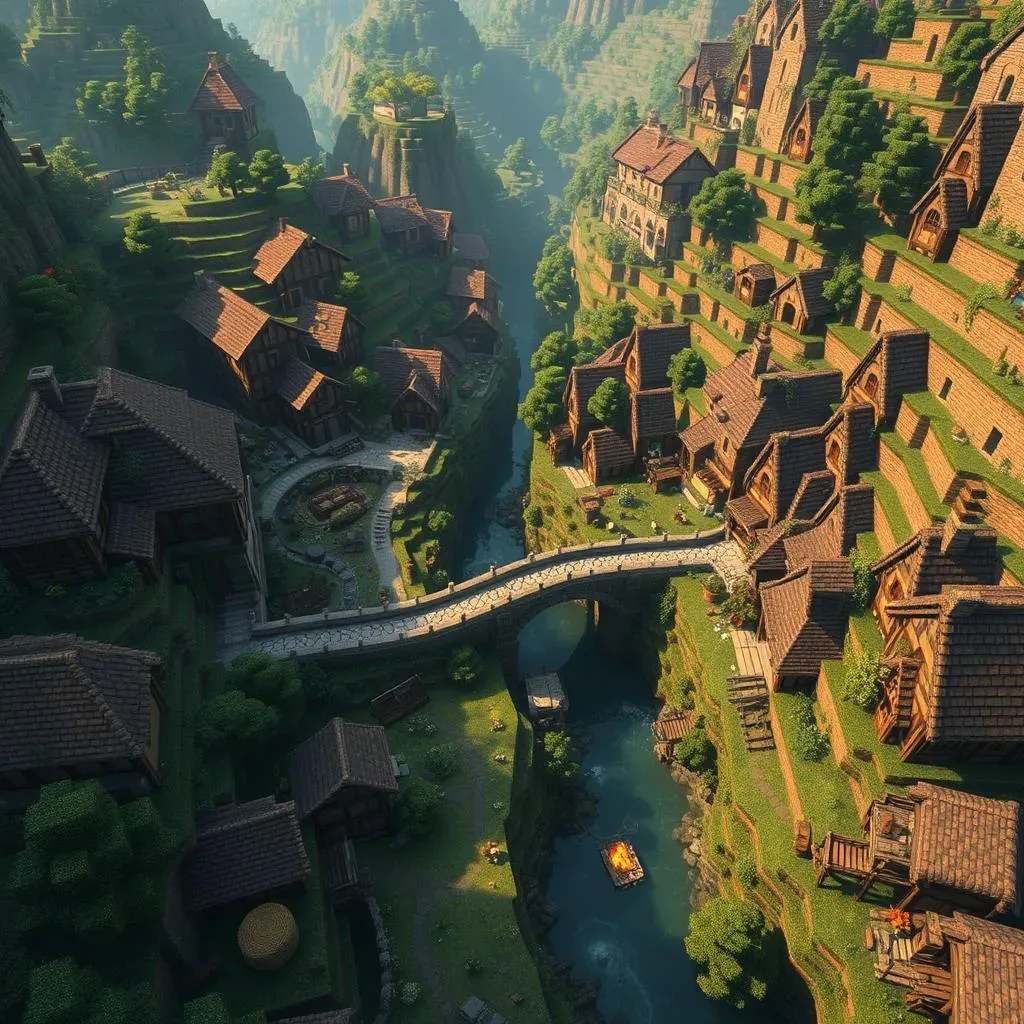
Mastering Your Medieval Minecraft House Village Layout: Tips & Tricks
Landscaping and Terrain Blending for Village Harmony
Want to take your medieval Minecraft house village layout from good to jaw-dropping? Don't underestimate the power of landscaping! Seriously, blending your village into the natural terrain is a game-changer. Instead of flattening everything into a boring plain, work with the land. Got hills? Terrace your houses into them! River? Build a bridge and have houses line the banks! Forest? Clear a natural-looking clearing instead of just bulldozing trees in a perfect circle. Use the terrain to your advantage to create different levels and interesting vistas. Terraforming tools in creative mode are your best friend here. Smooth out harsh edges, create gentle slopes, and add little details like paths winding through the landscape. It's all about making it look like your village organically grew out of the environment, not just slapped on top of it.
Think about the materials you use for landscaping too. Don't just leave bare dirt everywhere. Mix in different types of blocks like coarse dirt, gravel, and grass paths to create natural-looking ground textures. Plant trees and bushes strategically to soften the edges of buildings and blend them into the surroundings. Flowers and custom-placed rocks also go a long way. Even small details like adding custom trees using world edit or hand-placed leaves can elevate the whole look. Trust me, spending a bit of extra time on landscaping will make your medieval Minecraft house village layout feel a million times more immersive and believable.
Adding Life and Storytelling Through Details and Foliage
your village is looking good, but it's still feeling a bit… empty? Time to inject some life! Details are key to storytelling in Minecraft builds. Think about what villagers would actually do in a medieval village. Add little scenes that suggest activity. Hay bales and animal pens near farms, lumber piles outside workshops, fishing nets drying by the docks, maybe even a little campfire with logs around it in the town square. These small touches bring your medieval Minecraft house village layout to life and hint at the daily routines of its (imaginary) inhabitants.
And foliage, oh my goodness, foliage! It's not just about trees. Vines climbing up walls, bushes overflowing from window boxes, flower patches in gardens – these soft, organic elements are crucial for breaking up the harsh blockiness of Minecraft and making your village feel warm and inviting. Use leaf blocks, flower pots, and even custom-placed vines to add pops of color and visual interest. Don't be afraid to let nature "overgrow" parts of your village a little bit, especially in quieter corners or older buildings. It adds character and a sense of history. Remember, a truly great medieval Minecraft house village layout is one that tells a story, and details and foliage are your main tools for weaving that narrative.
Detail Type | Examples | Storytelling Element |
|---|---|---|
Work/Trade Details | Hay bales, lumber piles, fishing nets, market stalls | Suggests village economy and activity |
Foliage | Vines, bushes, flower pots, custom trees | Adds life, color, and softens blocky edges |
"Lived-in" Details | Campfires, barrels, crates, lanterns | Creates a sense of habitation and history |
Ready to Design Your Dream Medieval Minecraft House Village Layout?
Building a captivating **medieval Minecraft house village layout** is a journey of creativity and planning. From selecting the perfect spot to meticulously designing each building, every detail contributes to the overall charm of your settlement. Remember, there's no single "right" way to do it – let your imagination guide you, experiment with different styles and layouts, and most importantly, have fun bringing your medieval vision to life, block by block. Now go forth and build a village that would make any digital king proud!
